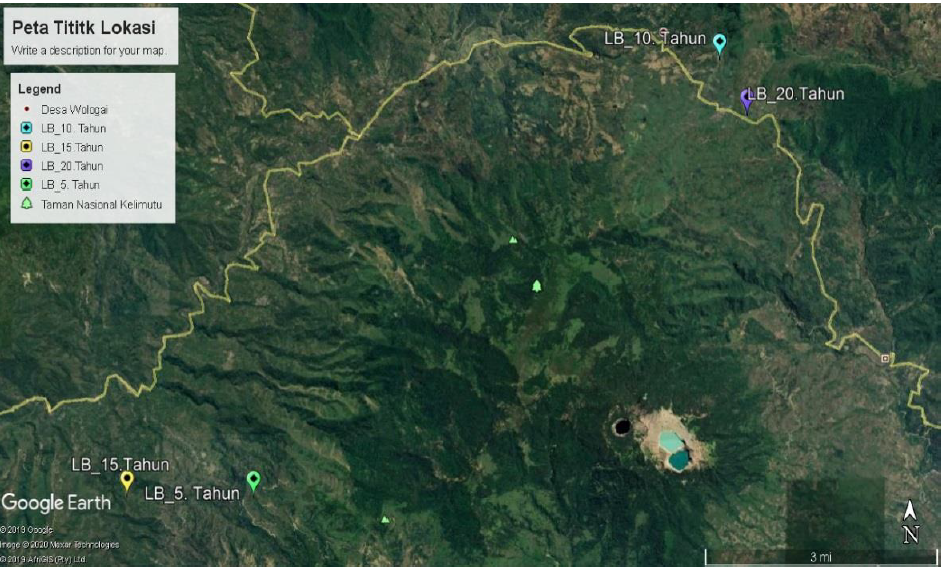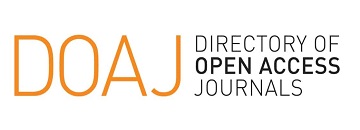Earthworm Diversity and Biomass in Different Fallow System in The Kelimutu National Park Areas

Downloads
Downloads
Amirat, F., Hairiah, K., & Kurniawan, S. (2014). Perbaikan biopori oleh cacing tanah (Pontoscolex corethrurus). Apakah perbaikan porositas tanah akan meningkatkan pencucian nitrogen?Jurnal Tanah dan Sumber Daya Lahan, 1(2), 25–34.
Battigelli, J. P. (2011). Exploring the world beneath your feet –soil mesofauna as potential biological indicators of success in reclaimed soils. Proceedings -Tailings and Mine Waste 2011, Vancouver, BC, November 6 to 9, 2011.
Dwiastuti, S., & Sajidan. (2014). Kontribusi naungan pohon terhadap kepadatan cacing tanah the effect of tree shading to earthworms density. Bioedukasi, 7(2), 43–46.
Fitrahtunnisa, & Liwa Ilhamadi, M. (2013). Perbandingan keanekaragaman dan predominansi fauna tanah dalam proses pengomposan sampah organik. bumi lestari, 13(2), 413–421.
Fonte, S. J., & Six, J. (2010). Earthworms and litter management contributionsto ecosystem services in a tropical agroforestry system. Geoderma,20(4), 1061–1073.
Hilwan, I., & Handayani, E. P. (2013). Keanekaragaman mesofauna dan makrofauna tanah pada areal bekas tambang timah di Kabupaten Belitung, Provinsi Kepulauan Bangka-Belitung. Silvikultur Tropika, 04(1), 35–41.
Jayanthi, S., Widhiastuti, R., & Jumilawaty, E. (2014). Komposisi komunitas cacing tanah pada lahan pertanian organik dan anorganik di Desa Raya Kecamatan Berastagi Kabupaten Karo. Jurnal Biotik, 2(1), 1–9.
Kirnadi, A. J., Zuraida, A., & Ilhamiyah. (2014). Survey status kesuburantanah di lahan usahatani padi lahan pasang surut Kabupaten Banjar. Media Sains,7(1), 53–59.
Kuntz, M., Berner, A., Gattinger, A., Scholberg, J. M., Mäder, P., & Pfiffner, L. (2013). Influence of reduced tillage on earthworm and microbial communities under organic arable farming. Pedobiologia -International Journal of Soil Biology, 56(4–6), 251–260.
Luise, M., Bartz, C., Pasini, A., & Gardner, G. (2013). Earthworms as soil quality indicators in Brazilian no-tillage systems. Applied Soil Ecology, 69, 39–48.
Pelosi, C., Toutous, L., Chiron, F., Dubs, F., Hedde, M., Muratet, A., … Makowski, D. (2013). Reduction of pesticide use can increase earthworm populations in wheat crops in a european temperate region. Agriculture, Ecosystems and Environment,181, 223–230.
Qudratullah, H., Setyawati, T. R., Yanti, A. H., Biologi, P. S., Mipa, F., Tanjungpura, U., … Nawawi, H. H. (2013). Keanekaragaman cacing tanah (Oligochaeta ) pada tiga tipe habitat di Kecamatan Pontianak Kota. Protobiont, 2(2), 56–62.
Saga, A. J. A., Sine, H. M. C., & Lehar, L. (2020). Soil worms populationin various little quality (c, n, c / n, lignin, and polyphenol) (case study on agroforestry land in Kelimutu National Park, Ende Regency-Indonesia). International Journal of Research-Granthaalayah,8(1), 124–130.
Sagita, L., Siswanto, B., & Hairiah, K. (2014). Studi keragaman dan kerapatan nematoda pada berbagai sistem penggunaan lahan di Sub DAS Konto. Jurnal Tanah dan Sumberdaya Lahan, 1(1), 51–60.
Schwab, N., Schickhoff, U., & Fischer, E. (2015). Agriculture, ecosystems and environment transition to agroforestry significantly improves soil quality : a case study in the Central Mid-hills of Nepal. Agriculture, Ecosystems and Environment,205, 57–69.
Setyaningsih, H., Hairiah, K., & Dewi, W. S. (2014). Respon cacing penggali tanah Ponthoscolex corethrurusterhadap berbagai kualitas serasah. Jurnal Tanah dan Sumberdaya Lahan, 1(2), 58–69.
Subowo, G., & Purwani, J. (2013). Pemberdayaan sumberdaya hayati tanah mendukung pengembangan pertanian ramah lingkungan. Jurnal Penelitian dan Pengembangan Pertanian, 32(4), 173-179.








